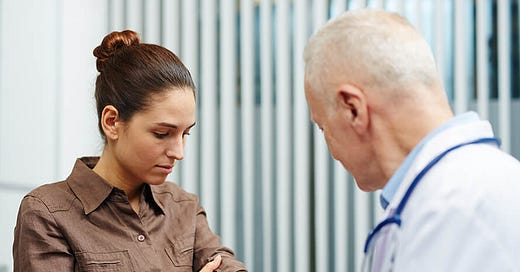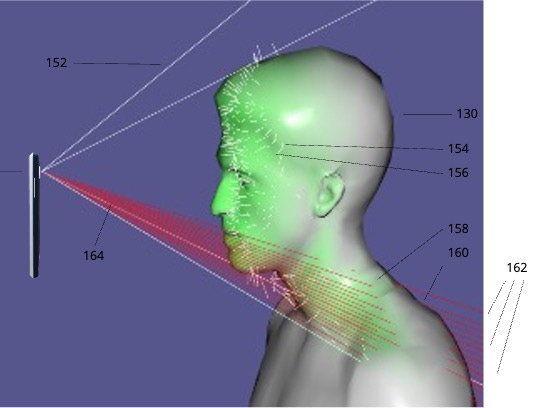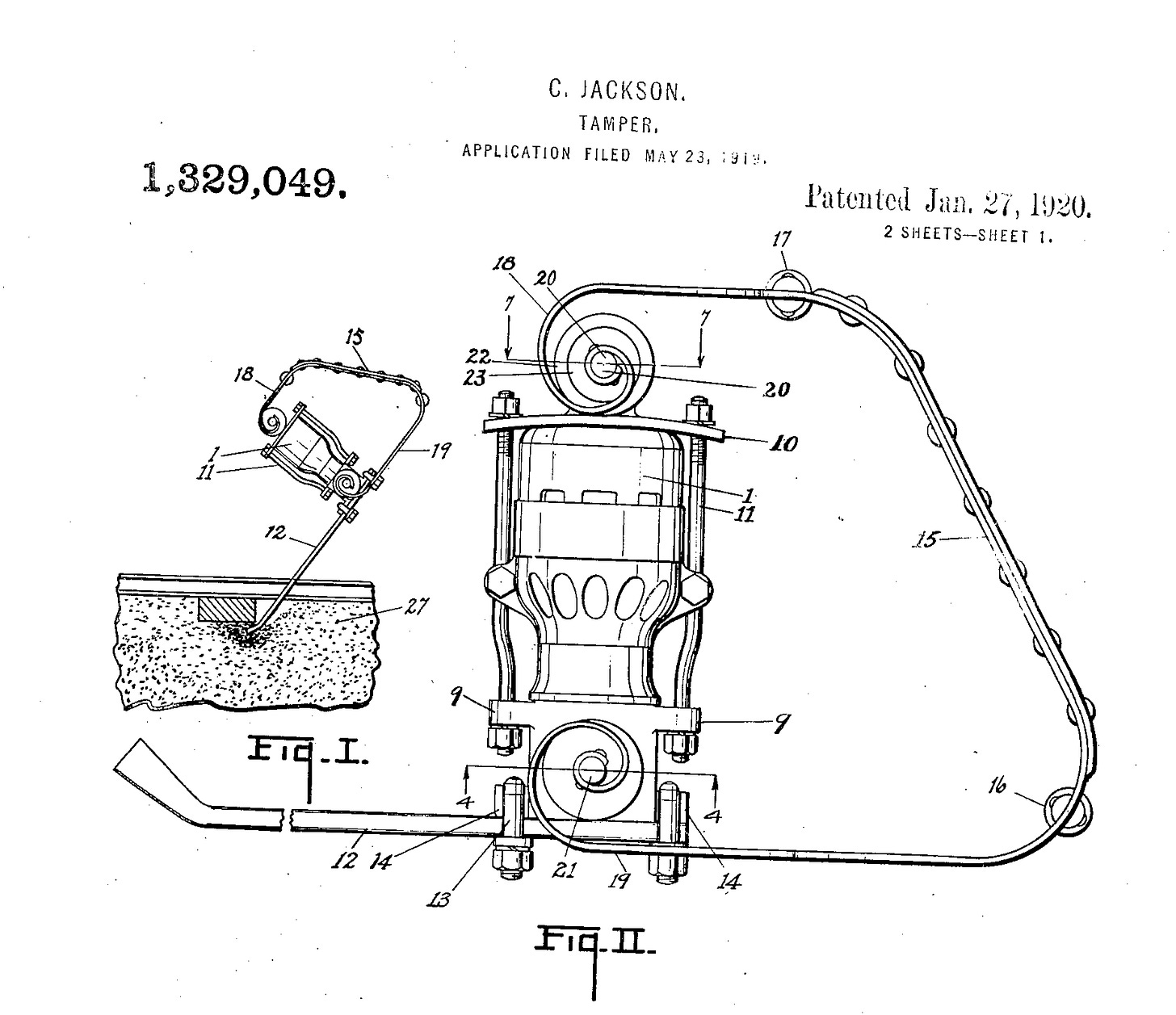In 2024, I had my first visit to a dermatologist. It was just an initial screening, but my new doctor in Naples, Florida insisted I start making the annual pilgrimage.
He’s originally from Wisconsin (and still teaches there) and, like me, a transplant to southwest Florida. As you might guess, there’s more sun exposure down here. Sure, I wear sunscreen every day, but even during our “winter,” more of my skin is exposed than when I lived in the frozen tundra.
I was…surprised at how low-tech the whole appointment seemed. Basically, the visit involved me stripping down to my underwear and having the doctor look over every inch of my skin from about three inches away. If she saw something she wanted to keep an eye on for later, her assistant would snap a photo. Next year, presumably, we’ll repeat the process to see if anything has changed.
What happens if I change insurance and go to a different doctor? Is there a Google Drive somewhere with my “photo shoot?” I’m not sure what I was expecting, but it wasn’t this.
Fast forward a few months and I found myself attending a Southwest Florida new business pitch competition. There were some outstanding ideas (as well as businesses with real traction) in the room—some of which I hope to feature here. But one resonated with my recent appointment: Skinmap.
Co-founder and MIT alum William Hall presented a groundbreaking approach to skin cancer detection. In short, it uses artificial intelligence to help dermatologists detect subtle changes that are the precursors to skin cancer.
This’s more like it. Skinmap leverages the sort of thing AI is very good at—noticing changes humans might miss.
What follows below is my Q&A with co-founder William Hall. He tells a compelling story about the vision, technology, and progress the team has already made. At the end of the article, he asks for your help—in short, they’re looking for clinicians to test and adopt the technology, and the company has built a powerful business model to create the proper incentive structure.
Go ahead and forward this to your dermatologist. Who knows? They might be using Skinmap at your next appointment.
Enjoy!
What’s the core technology that makes this work?
To make Skinmap work as a product, we needed to make total body photography much faster while improving photographic quality, at low cost. There are two aspects to the speed of total body photography: image capture and image review.
To keep the cost low, we decided to use a smartphone for image capture. To achieve sufficient photographic quality (4 pixels per millimeter, based on the characteristics of skin cancer growth) the phone needs to be held close to the skin. To make the process sufficiently fast for use in busy dermatology clinics (our target is a 60-second imaging scan), we wanted the photographer to pass the phone over the skin and let the software take 300-500 pictures. Having all those pictures would be of no help if the dermatologist couldn't rapidly find the image of any specific area and the system couldn't tell where lesions were changing. Thus, we had to make the system recognize where each pixel of each image belongs on the patient's skin.
Existing 3D capture systems assume a static scene across photographs, but imaging a living, moving patient over the course of 60 seconds violates that assumption. To solve this, we invented and patented (US patent #11,922,576) a novel approach that recognizes changes in body pose and camera perspective across the image set. Our system maps each pixel to a dynamic body coordinate system that adapts to the patient’s motion.
This invention allows rapid navigation through the images by tapping on the location of interest on a 3D avatar of the patient. It also allows Skinmap to show the same area from different capture sessions, making it much easier to detect skin changes by eye and by artificial intelligence.
What behavior change are you asking your target audience to make?
We believe that someday, patients will receive a quick photographic scan of their skin as part of their regular physical examinations. The scan will allow artificial intelligence to help the physician identify problems earlier, so that a specialist can treat them before it is too late. Our first target is skin cancer, for which the 100 million high-risk Americans who do not receive examinations by a dermatologist suffer most of the mortality.
Our first customers on this journey are the dermatologists who will ultimately treat the patients referred to them as a result of Skinmap-based screening. We need them to use Skinmap as a total body photography tool to improve their ability to recognize cancer at its earliest stages.
Why is this better than what they're doing now?
A commonly referenced mnemonic for the recognition of skin cancer is "ABCDE," which stands for Asymmetry, Border, Color, Diameter, and Evolution. Evolution is of key importance in their task: because all cancer is by definition growing, focusing on lesions that are evolving allows dermatologists to find cancers earlier, before the other indicators (ABCD) clearly point to cancer. It also allows the dermatologist to recognize benign lesions that may be hard to diagnose correctly with just ABCD. Total body photography is the only reliable way for the dermatologist to see Evolution, and has been shown to improve diagnostic accuracy in several clinical studies.
Dermatologists have traditionally been reluctant to offer total body photography because it can be very expensive in terms of clinician time and capital expense. Skinmap's unique method of total body photography changes the math. Instead of hurting the practice's profitability, Skinmap improves it significantly, while providing the dermatologist with the information they need to make better diagnoses.
Why are you the right person/company to do this?
We have the right skills and have established the patented know-how to make this succeed. Our total body photography technology works and is now in regular use in dermatology clinics. Our team includes computer vision and artificial intelligence experts, software engineers, dermatologists, and entrepreneurs. Our technology and patents provide us with strong competitive advantages.
Our Chief Medical Officer, Dr. Samir Patel, is an entrepreneurial dermatologist and dermatopathologist who started and grew what is now the largest dermatology practice in the Cincinnati area. He deeply understands product requirements to succeed in the rapid pace of dermatology clinic workflow.
Why is now the right time?
The medical world is embracing artificial intelligence and digital health. A few years ago, artificial intelligence wasn't accurate enough to be very helpful. Patients wouldn't have wanted it, and the Food and Drug Administration (FDA) didn't know how to think about it. Smartphones were not sufficiently capable to run the demanding computations required by Skinmap, nor did their cameras produce sufficiently high quality images.
That has all changed in just the past several years. The FDA has now approved over 1,000 AI-based medical devices, led by the field of radiology with its treasure trove of images. Dermatologists, who used to fear AI, now demand it. And of course, mobile device technology continues to make spectacular advances and is now able to run Skinmap easily.
Who is your favorite historical role model? Inventor? Leader? And why?
That has to be Corwill Jackson, my great-grandfather. At a time when electric motors were new technology, and many large corporations were working hard to improve them by making them run more quietly and smoothly, Corwill did the opposite. In 1919, he filed a patent application for his electric vibrating hand tamper that benefited from the vibrations generated by unbalanced motors. He founded the Electric Tamper and Equipment Company in 1923, which went on to become a leader in the booming railway maintenance equipment industry. The company he founded is now part of Harsco Rail.
Corwill passed away before I was born, but the evidence of his ingenuity was there all around me growing up. From the glossy brochures of track construction machines that could drive along building railroad as they went, to the amazing house he built with its foundation of vibrated concrete that has yet to form any cracks 90 years later, he was clever in everything he did. But he was more than a great inventor and engineer - he was also adept in sales, marketing, and building a strong company culture that valued his employees' skill and contributions. For all those reasons, I respect and admire him.
What's your one ask right now? What do you need? How can people help?
The best way to help would be to introduce us to dermatologists. You'll be doing the dermatologist and their patients a favor. Skinmap is fast and easy for dermatology practices to use. It's reimbursable, and patients love it. It takes less than a week for a typical small office to recoup the capital investment, after which it can contribute significantly to the practice's economics.
For more information about Skinmap:
Contact: William Hall, CEO and Co-Founder, Triangulate Labs
Web: Skinmap.com
Email: hello@skinmap.com
Are you in the process of “making history” right now? Or do you know someone who is? Reach out to me via email or on Substack to discuss getting your own feature on Innovation History.










